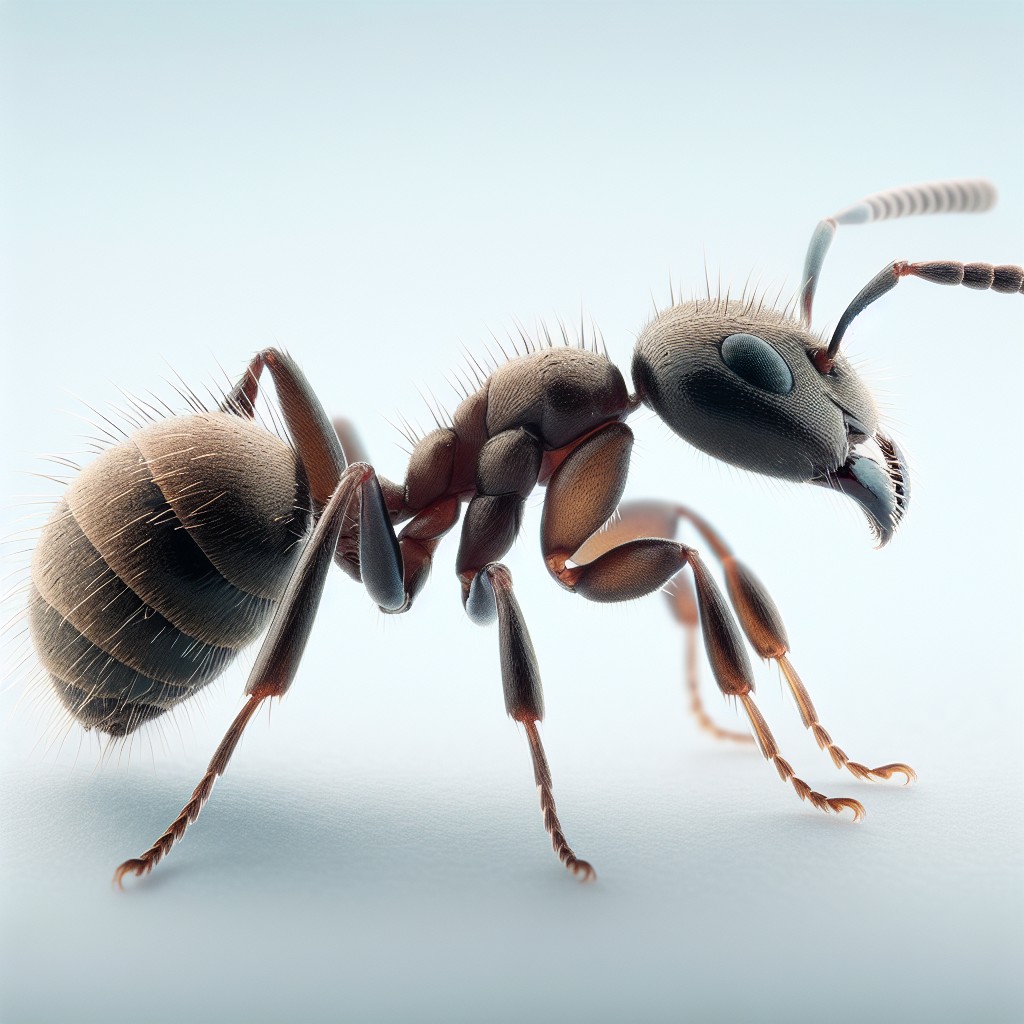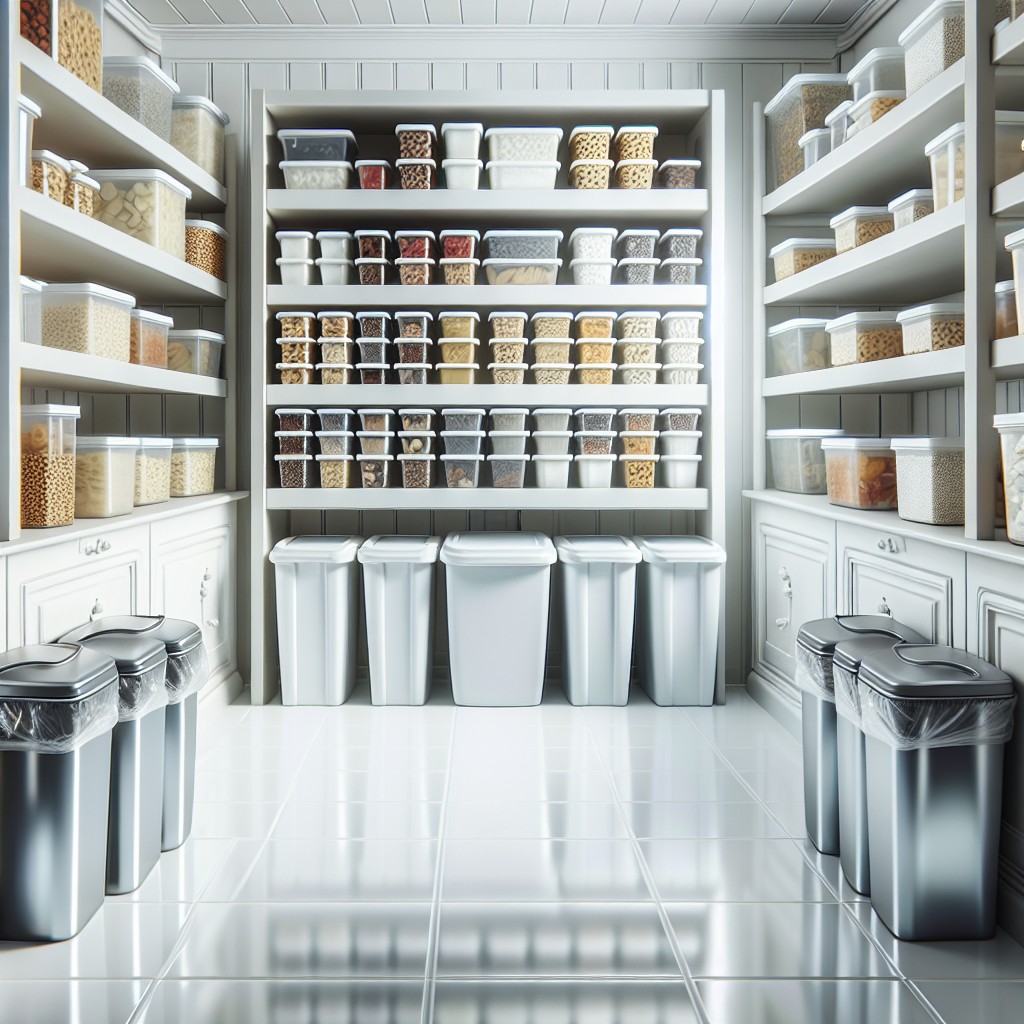Last updated on
This guide provides practical, easy-to-follow steps on how to effectively rid your home of sugar ants.
Key takeaways:
- Recognize sugar ants by their small size and preference for sweets
- Use vinegar, essential oils, borax, cornmeal, and seal entry points to eliminate sugar ants
- Understand sugar ant behavior to target them effectively
- Prioritize safety when using ant removal methods, especially around children and pets
- For persistent sugar ant problems, trace entry points, use baits, consider insecticidal dust, adjust landscaping, and consider professional help.
What's Inside
How to Identify Sugar Ants

Recognizing these tiny invaders is step one in your ant-removal mission. They’re small, typically 2 to 3 millimeters long, and boast a love for sweets.
These ants are light brown to black and often spotted parading towards food spills or sugary residues in kitchens. Notice their antennae, elbowed in shape, and their segmented bodies, differing from other household pests.
Check for their distinctive foraging trails too; sugar ants are social creatures, rarely traveling alone. Spotting a lone ant typically indicates more nearby.
Keep an eye on moisture-prone areas, as they’re hotspots for sugar ant activity due to their need for water.
Lastly, take a glance outside at dusk: if you see ants emerging from nests to forage, it’s prime time for identifying your tiny adversaries.
Effective DIY Tips for Getting Rid of Sugar Ants
Vinegar Solution: Mix equal parts of water and vinegar and spray directly on the ants or on their trails. The strong scent disrupts their pheromone trails and deters them from returning.
Essential Oils: Dab cotton balls with peppermint, lemon, or tea tree oil and place them in areas of ant activity. Ants dislike these scents, and they act as natural repellents.
Borax Bait: Combine borax with powdered sugar in a 1:3 ratio. Place the mixture where ants frequent but away from pets and children. The sugar attracts ants, while the borax poison eliminates them.
Cornmeal Trick: Spreading cornmeal near the ant’s point of entry serves as bait. Although not toxic, ants can’t digest cornmeal, which eventually gets rid of them.
Seal Entry Points: Caulk cracks and crevices in doors, windows, and foundations. Preventing access is key to long-term ant control.
Keep Surfaces Clean: Wipe down counters and sweep floors regularly to remove food residue. Ants are less likely to invade if there’s no food to be found.
Remove Standing Water: Eliminate moisture sources such as leaky faucets, as ants are attracted to water.
Prompt Food Storage: Store ripe fruit in the refrigerator and keep food in airtight containers. If ants can’t find food, they’ll move on.
Understanding Sugar Ant Behavior
Recognizing the patterns of these tiny critters is key to targeting your ant-battling strategies effectively. Here’s a breakdown to enhance your ant-annihilating acumen:
– Sugar ants are primarily nocturnal; they forage for food at night, which means you’re more likely to spot their trails after dark. – They’re attracted to sweets, hence the name, so sugary spills and crumbs are their siren calls. – Their colonies can be massive, sometimes housing thousands, and are often located in dark, undisturbed spaces. – Once a scout ant finds a food source, it leaves a scented trail for others to follow, which is why you see long lines of ants. – Sugar ants prefer warm, moist environments, so kitchens and bathrooms become their favorite hangouts. – Disruptions to their scent trails can temporarily confuse them, but they’re great at finding alternative routes. – Eradicating a colony often requires attacking the problem at the source—simply spraying the visible ants won’t cut it.By grasping these tendencies, you empower yourself to craft an environment that’s less hospitable to sugar ants and disrupt their habitual foraging effectively.
Safety Considerations for Ant Removal
When declaring war on ants in your home, prioritize your safety and that of your household. Always read labels before using any commercial ant baits or insecticides. These products can contain harmful chemicals that are toxic if ingested or inhaled. If you have children or pets, opt for natural ant deterrents like vinegar or essential oils whenever possible, as these are less risky.
Moreover, when using any substances, ensure proper ventilation to avoid inhaling fumes. Wear gloves to prevent skin contact with irritants. If you’re planning to spray insecticides, avoid doing so on surfaces that come in contact with food unless the product is specifically designed for such use.
Lastly, consider the environmental impact of what you’re using. Many ant-killing products can also harm beneficial insects or pets if not used correctly. Always store ant control products away from food and out of reach of children and animals. Quick action is excellent, but safe action ensures that the only casualties in your ant battles are the ants themselves.
Solving Persistent Sugar Ant Problems
When sugar ant trouble lingers despite your best efforts, it’s time to rethink your strategy. Persistent issues often point to a larger problem: a well-established nest or multiple nests, perhaps even outside your home. To uproot the problem, consider a multipronged approach.
Firstly, trace their entry points. Examine your home thoroughly—look for tiny cracks or holes in walls, window frames, and foundation. Seal these entryways with caulk, ensuring ants can no longer access your space.
Secondly, baiting is a powerful tactic. Choose slow-acting baits that foragers bring back to the colony, eventually poisoning the queen and other ants. Patience is key; it takes time for baits to disrupt the entire nest.
For areas you can’t access, such as wall voids or under slabs, insecticidal dust can be effective. A thin layer puffed into these spaces has a sustained effect, targeting ants you can’t see.
Landscaping practices also make a difference. Trim back branches or plants touching your house, as they serve as natural bridges for ants to enter. Keep mulch and soil levels low around the foundation to avoid moisture buildup, which attracts ants.
Lastly, if all else fails, it may be time to contact a professional pest controller. They offer solutions that can address the infestation at its source, with more advanced methods and products for long-term relief.




